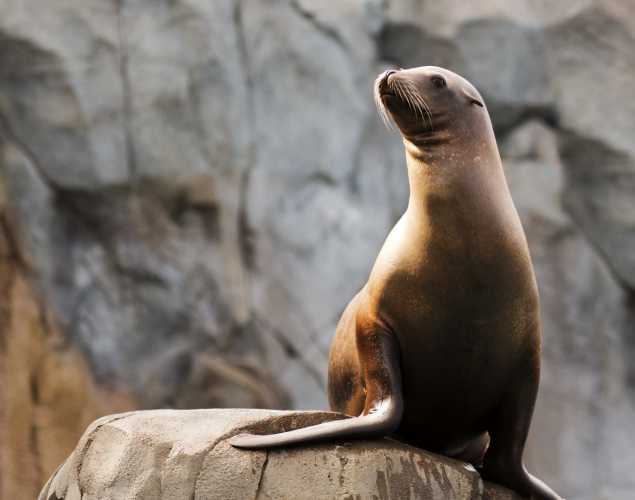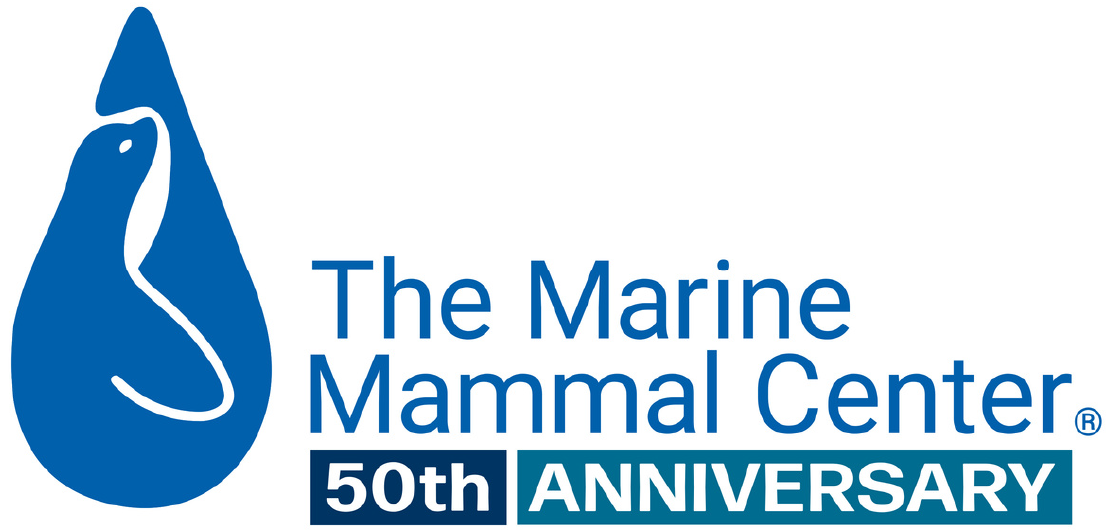
Klebsiella pneumoniae in stranded california sea lions (Zalophus californianus) of central California between 2017-2022
- Microbiology
Abstract
Klebsiella pneumoniae is a Gram-negative, facultative anaerobic, and non-motile bacillus frequently observed in mammals. A hypermucoviscous (HMV) phenotype of K. pneumoniae is reported in stranded California sea lions (CSL) causing pleuritis and bronchopneumonia as a persistent cause of strandings. We describe an increase in cases of HMV and non-HMV K. pneumoniae in stranded CSLs along the California coast between 2017 to 2022. 2,146 live-stranded CSLs were rescued by The Marine Mammal Center (Sausalito, California). 47 of these tested positive for K. pneumoniae, with a rise in annual incidence from 0.92% (3/331) in 2017 to 8.5% (14/165) and 7.2% (23/ 320) in 2021 and 2022, respectively. These strandings occurred across 965 kilometers along the North-Central California coast from Bodega Bay, Sonoma, to Avila Beach, San Luis Obispo. A similar pattern was observed in beach-cast CSL carcasses by the Long Marine Laboratory (LML) Stranding Network in Santa Cruz, California who had 8 CSLs test positive for K. pneumoniae with an annual incidence rate of 2.0% (1/50) and 10.1% (7/69) in 2021 and 2022, respectively, with no cases reported prior to 2021. We applied whole-genome sequencing (WGS) to 8 isolates obtained by LML in 2022. WGS analysis revealed high nucleotide similarity between any pair of isolates. Multilocus Sequence Typing showed that all isolates belonged to Sequence type 65 and contained the K2 polysaccharide capsule and siderophore aerobactin, which are all characteristics of hypervirulent K. pneumoniae. We discuss possible causes for this trend and a need for research on K. pneumoniae in free-ranging CSLs in California.
Zotto, S. N., Dunkin, R. C., Limon, J. D., Smith, M. S., Hortensius, L. M., Martinez, M. E., Duignan, P. J., Field, C., Soto, E., Whitaker, D., Rios, C., Byukusenge, M., Jayarao, B., Kuchipudi, S. V., & Kinsley, A. C. (2025). Klebsiella pneumoniae in stranded california sea lions (Zalophus californianus) of central California between 2017-2022. Frontiers in Marine Science, 11, 1484944. https://doi.org/10.3389/fmars.2024.1484944
Meet The Experts
{"image":"\/People\/Portrait\/lian-hortensius.jpg","alt":"Lian Hortensius","title":"Lian Hortensius","text":"Director, Animal Data Science","link_url":"https:\/\/www.marinemammalcenter.org\/person\/lian-hortensius","link_text":"Read Bio"}

{"image":"\/People\/Portrait\/cara-field.jpg","alt":"Cara Field","title":"Cara Field","text":"Director, Conservation Medicine","link_url":"https:\/\/www.marinemammalcenter.org\/person\/cara-field","link_text":"Read Bio"}

{"image":"\/People\/Portrait\/cropped-images\/Padraig Duignan-0-56-635-496-1601760621.jpg","alt":"Padraig Duignan","title":"P\u00e1draig Duignan","text":"Director of Pathology","link_url":"https:\/\/www.marinemammalcenter.org\/person\/padraig-duignan","link_text":"Read Bio"}

{"image":"\/People\/Portrait\/cropped-images\/carlos-rios-0-180-1160-906-1605722153.jpg","alt":"Carlos Rios","title":"Carlos Rios","text":"Associate Director, Pathology and Diagnostics","link_url":"https:\/\/www.marinemammalcenter.org\/person\/carlos-rios","link_text":"Read Bio"}

Related Publications
{"image":"\/Animals\/Wild\/Other species\/nz-sea-lion-shutterstock.jpg","alt":"New Zealand sea lion","title":"Causes of Death in Two Populations of New Zealand Sea Lions","link_url":"https:\/\/www.marinemammalcenter.org\/publications\/causes-of-death-in-two-populations-of-new-zealand-sea-lions","label":"Research Paper"}

{"image":"\/Animals\/Patients\/California sea lions\/csl-by-bill-hunnewell-c-the-marine-mammal-center-6.jpg","alt":"California sea lions","title":"Zoonotic Bacteria Persistence and Susceptibility","link_url":"https:\/\/www.marinemammalcenter.org\/publications\/zoonotic-bacteria-persistence-and-susceptibility","label":"Research Paper"}

{"image":"\/Animals\/Patients\/California sea lions\/cropped-images\/csl-photo-by-bill-hunnewell-c-the-marine-mammal-center-1-0-0-2358-1722-1600891644.jpg","alt":"California sea lions","title":"Emerging Viruses in Marine Mammals","link_url":"https:\/\/www.marinemammalcenter.org\/publications\/emerging-viruses-in-marine-mammals","label":"Research Paper"}

{"image":"\/Animals\/Patients\/California sea lions\/csl-photo-by-bill-hunnewell-c-the-marine-mammal-center-12.jpg","alt":"two California sea lions","title":"Multi-Phase Muscle Breakdown in California Sea Lions","link_url":"https:\/\/www.marinemammalcenter.org\/publications\/multi-phase-muscle-breakdown-in-california-sea-lions","label":"Research Paper"}

Recent News
{"image":"\/Animals\/Patients\/Harbor seals\/2020\/cropped-images\/hs-barnwood-by-bill-hunnewell-c-the-marine-mammal-center-315-0-3299-2577-1607370547.jpg","alt":"harbor seal Barnwood","title":"Last-Minute Gift Guide \u2013 Top Gifts that Give Back to Marine Animals","link_url":"https:\/\/www.marinemammalcenter.org\/news\/last-minute-gift-guide","label":"News Update","date":"2025-12-18 01:00:00"}

Last-Minute Gift Guide – Top Gifts that Give Back to Marine Animals
December 18, 2025
Read More{"image":"\/Animals\/Patients\/Hawaiian monk seals\/2025\/cropped-images\/b-ru72admission-to-ke-kai-ola112125photo-c-the-marine-mammal-center-noaa-permit-24359-0-364-1270-992-1766095407.jpg","alt":"A newborn Hawaiian monk seal pup with a black coat in rehabilitative care.","title":"Newborn Hawaiian Monk Seal Pup Now Receiving Care","link_url":"https:\/\/www.marinemammalcenter.org\/news\/newborn-hawaiian-monk-seal-pup-now-receiving-care","label":"Patient Update","date":"2025-12-18 01:00:00"}

{"image":"\/Animals\/Patients\/Hawaiian monk seals\/2025\/cropped-images\/d-ru28release-exam-at-ke-kai-ola111025photo-by-giancarlo-rulli-c-the-marine-mammal-center-noaa-permit-24359-0-0-1270-992-1764620886.jpg","alt":"","title":"Bird Flu Vaccine Trial Offers Hope for Protecting Hawaiian Monk Seals","link_url":"https:\/\/www.marinemammalcenter.org\/news\/bird-flu-vaccine-trial-may-offer-hope-for-protecting-hawaiian-monk-seals","label":"News Update","date":"2025-12-01 08:13:00"}

Bird Flu Vaccine Trial Offers Hope for Protecting Hawaiian Monk Seals
December 1, 2025
Read More{"image":"\/Animals\/Patients\/Hawaiian monk seals\/2021\/hms-pp08-by-sheila-latta-c-the-marine-mammal-center-noaa-permit-18786.jpg","alt":"Hawaiian monk seal","title":"The New York Times: Inside the Bird-Flu Vaccine Trial for Monk Seals","link_url":"https:\/\/www.marinemammalcenter.org\/news\/the-new-york-times-inside-the-bird-flu-vaccine-trial-for-monk-seals","label":"In the News","date":"2025-12-01 01:00:00"}

The New York Times: Inside the Bird-Flu Vaccine Trial for Monk Seals
December 1, 2025
Read More
